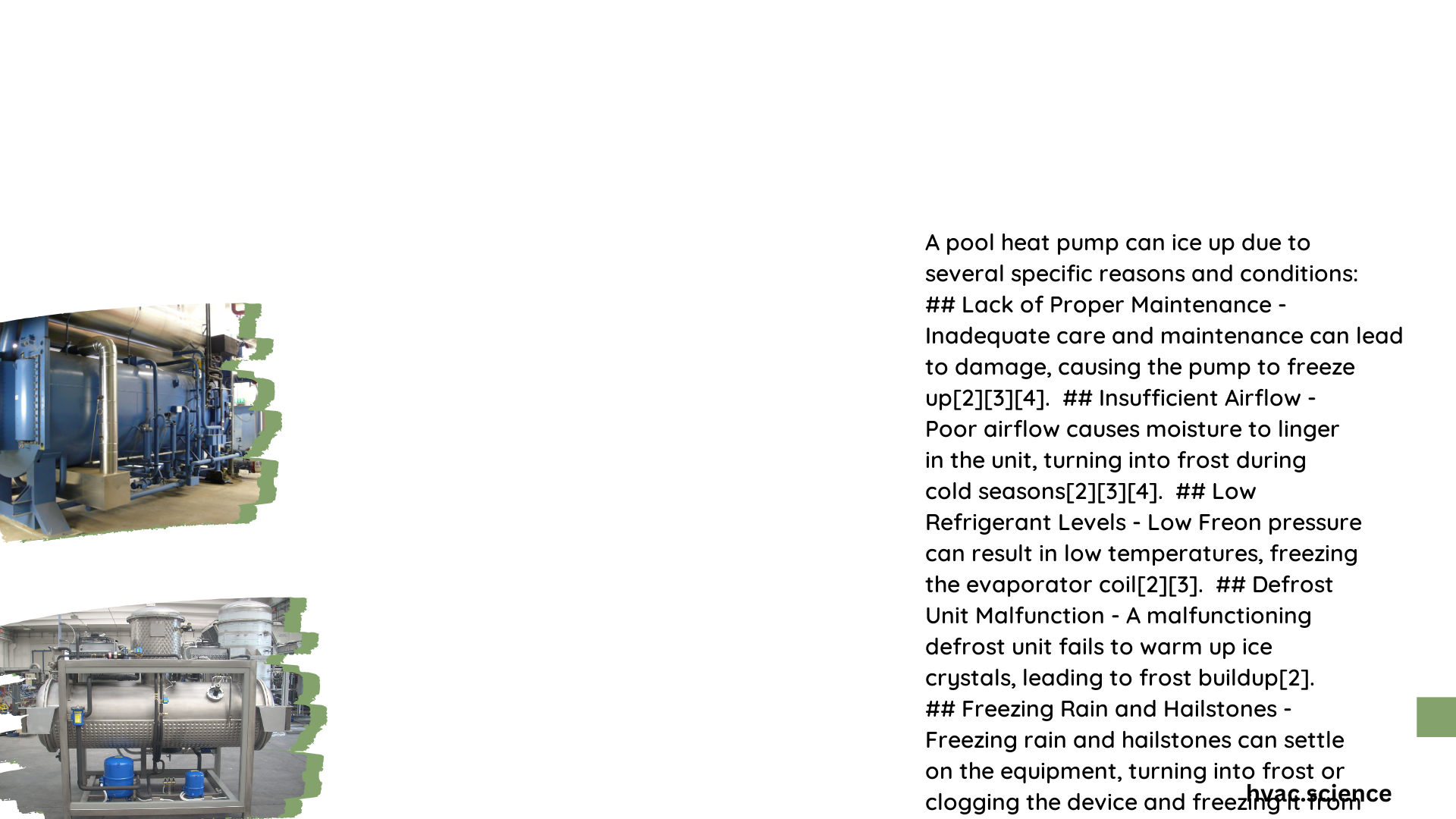Pool heat pumps can unexpectedly freeze during cold conditions, causing significant performance disruptions. When temperatures drop and humidity rises, these sophisticated devices may experience ice accumulation on critical components, potentially compromising their efficiency and operational integrity. Understanding the underlying mechanisms and implementing strategic interventions can help pool owners mitigate and resolve pool heat pump icing challenges.
What Causes Pool Heat Pump to Ice Up?
Environmental Triggers for Ice Formation
Pool heat pump icing occurs due to multiple interconnected factors:
- Temperature Dynamics
- Ambient temperatures below 0°C
- High atmospheric humidity
-
Rapid temperature fluctuations
-
Moisture Interaction
- Condensation buildup
- Precipitation accumulation
- Frost formation mechanisms
How Does Ice Impact Heat Pump Performance?
| Performance Metric | Impact Level | Potential Consequences |
|---|---|---|
| Airflow Restriction | High | Reduced heat transfer efficiency |
| Energy Consumption | Moderate | 20-30% increased power usage |
| Component Stress | Severe | Potential mechanical damage |
Why Does Moisture Accumulate on Heat Pump?

Operational Conditions Contributing to Icing
Airflow Complications
- Blocked air intake vents
- Obstructed external unit
- Insufficient clearance around equipment
Refrigerant System Challenges
- Low refrigerant levels
- Potential system leaks
- Compromised heat exchange capacity
How to Diagnose Pool Heat Pump Ice Issues?
Systematic Inspection Approach
- Visual Assessment
- Check entire unit for ice coverage
- Measure ice thickness
-
Identify potential blockage areas
-
Technical Diagnostic Tools
- Multimeter for electrical diagnostics
- Refrigerant leak detector
- Chlorine strips for system integrity testing
What Preventive Measures Can Be Implemented?
Maintenance Strategies
- Regular professional servicing
- Quarterly comprehensive system checks
- Maintaining recommended clearance around unit
- Installing protective covers during extreme weather
How to Resolve Immediate Icing Problems?
Quick Intervention Techniques
- Temporary Solutions
- Manually remove surface ice
- Ensure proper drainage
-
Check air filter cleanliness
-
Professional Interventions
- Refrigerant level verification
- Defrost cycle mechanism inspection
- Component functionality assessment
What Are Potential Repair Costs?
Financial Considerations
- Minor maintenance: $50-$200
- Component replacement: $100-$500
- Comprehensive system repair: $500-$2,000
Expert Recommendations
Long-Term Pool Heat Pump Care
- Invest in high-quality, weather-resistant models
- Implement proactive maintenance schedules
- Consider geographical climate adaptations
Pro Tip: Always consult manufacturer guidelines and professional technicians for specific pool heat pump models and unique installation environments.
Conclusion
Understanding pool heat pump icing requires a holistic approach combining technical knowledge, preventive maintenance, and strategic interventions. By recognizing early warning signs and implementing comprehensive care strategies, pool owners can ensure optimal heat pump performance and longevity.
